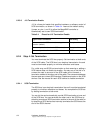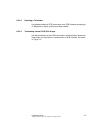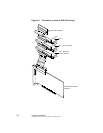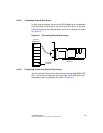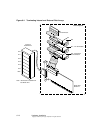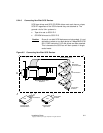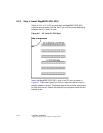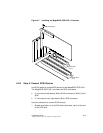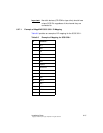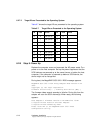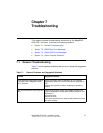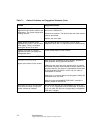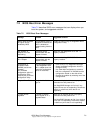
6-14 Hardware Installation
Copyright © 2002 by LSI Logic Corporation. All rights reserved.
2. Configure all SCSI devices to supply TermPWR.
3. Set proper target IDs (TIDs) for each SCSI device.
The cable length can be up to 20 m.
6.2.6.1 Cable Suggestions
System throughput problems can occur if SCSI cable use is not
maximized. Here are some cabling guidelines:
· You can use cables up to 12 meters for LVD devices.
· For single-ended SCSI devices, use the shortest SCSI cables.
· Use active termination.
· Avoid clustering the cable nodes.
· Cable stub length should be no more than 0.1 meter (4 inches).
· Route SCSI cables carefully.
· Use high impedance cables.
· Use flat cables for inside the enclosure, and round, shielded cables
for outside of the enclosure.
· Ribbon cables have fairly good cross-talk rejection characteristics.
6.2.7 Step 7: Set Target IDs
Set target identifiers (TIDs) on the SCSI devices. Each device in a
specific SCSI channel must have a unique TID in that channel. Non-disk
devices (CD-ROM or tapes) should have unique SCSI IDs regardless of
the channel where they are connected. See the documentation for each
SCSI device to set the TIDs. The MegaRAID SCSI 320-1 controller
automatically occupies TID 7 in the SCSI channel. Eight-bit SCSI devices
can only use the TIDs from 0 to 6. 16-bit devices can use the TIDs from
0 to 15. The arbitration priority for a SCSI device depends on its TID.
Table 6.5 shows the relative priority of each Target ID:
Table 6.5 Priority of Target IDs
Priority Highest Lowest
TID 7 6 5 ... 2 1 0 15 14 ... 9 8



